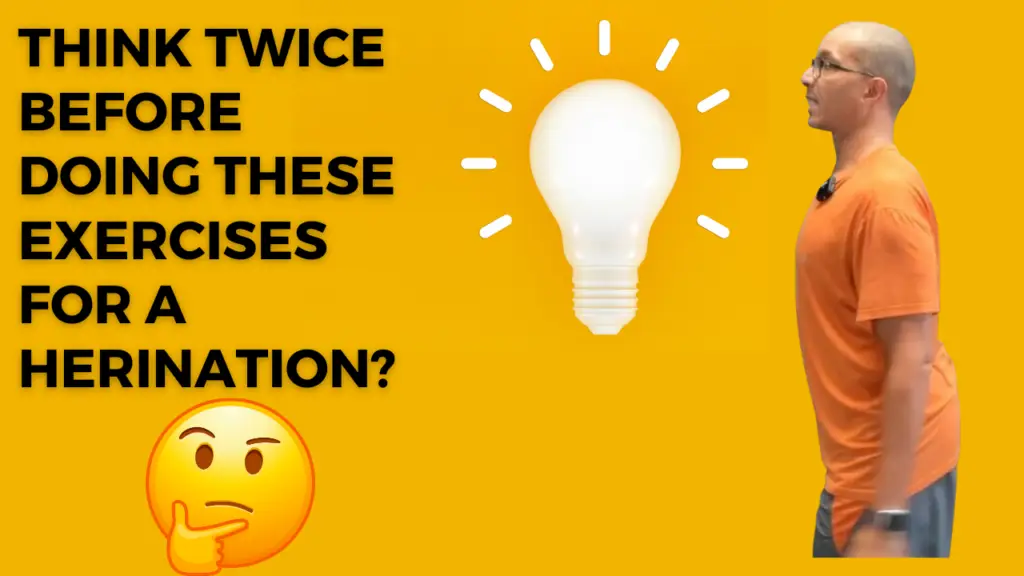If you’ve been diagnosed with a disc herniation, chances are you’ve Googled exercises to help. Over and over, you’ll see two moves: the cobra stretch (from yoga) and the McKenzie press-up (from physical therapy).
But here’s the truth: these common disc herniation exercises can actually make things worse for most people. They are often prescribed without understanding your individual spinal mechanics, which means they might not only fail to help — they could aggravate your condition.
Let’s break down why these two moves can be risky, what your spine is actually doing during these postures, and how to approach disc herniation recovery in a more intelligent, holistic way.

Click on the image to watch 👆🏽
The Problem With One-Size-Fits-All Spine Exercises
I’ve been there. Years ago, I developed a disc bulge at L4-L5 with sciatic pain shooting down my leg. I did what most people do — tried cobra stretches in yoga and McKenzie press-ups from PTs. Both times, my pain got worse.
At the time, I didn’t know why. Now I do.
Those movements are overgeneralized. They only help in a narrow set of circumstances — and most people don’t fit those criteria.
First, Understand the Types of Disc Damage
Here’s a quick overview of disc issues (from least to most severe):
- Disc Bulge – Nucleus pulposus (the inner disc material) pushes outward but stays within the disc wall.
- Disc Herniation – That material breaks through the wall and leaks out.
- Disc Prolapse – The nucleus fully escapes into the spinal canal.
Each condition alters the function of the spinal joint and impacts the surrounding nerves and tissues differently. Treating them all the same — with a cobra or press-up — doesn’t make sense.
Your Spine Is Not a Stack of Bricks
Your spine is a dynamic structure made up of:
- Vertebral bodies (the “front end” weight-bearing portions)
- Discs (shock-absorbing joints)
- Facet joints (the “steering wheels”)
- Spinous processes (like the brakes of a car)
Together, they form an FSU: Functional Spinal Unit. These units rely on proper mechanics: flexion, extension, lateral flexion, rotation, and translation.
Every movement involves multiple forces—nothing is ever pure. When you rotate, you also compress. When you extend, you also rotate. These blended movements influence disc pressure, often in unpredictable ways.
Why Cobra and McKenzie Press-Up Can Backfire
These two moves assume your disc bulge is posterior-lateral — meaning the disc is pushing out the back and to the side. The idea is that spinal extension will push the disc forward and relieve pressure.
Sounds good, right? Here’s why it fails:
1. Pascal’s Law
This physics principle explains that pressure applied to a fluid spreads equally in all directions. That means extension doesn’t only push the disc forward — it also forces pressure into weak spots, wherever they exist.
If your disc is compromised in the front, sides, or multiple locations, you might worsen the damage by blindly pushing pressure through the spine.
2. No Joint Specificity
Let’s say your herniation is at L4-L5. When you press your whole spine up in cobra or McKenzie, you’re moving every spinal level, not just that one.
That means:
- You could compress facet joints elsewhere
- You could strain the SI joint
- You could exacerbate other minor bulges
One good movement at one joint could create multiple new problems at others.
So What Should You Do Instead?
A better approach starts with a full-body evaluation — not just an x-ray. Imaging is helpful, but it doesn’t show:
- Movement compensation
- SI joint function
- Muscle imbalance
- Nerve compression from other structures
A smart rehab program must include:
- Postural analysis
- Mobility and stability testing
- Targeted myofascial stretching
- Strengthening deep spinal stabilizers
- SI joint and pelvic balancing
Your spine doesn’t operate in isolation. Treating a disc herniation without addressing your whole functional chain is like patching a leak without checking the plumbing.
Your Goal Isn’t Just Pain Relief — It’s Full Function
You don’t want to be the person who does one exercise forever just to avoid pain. You want to live fully — to play, hike, lift, and move with confidence. That means correcting your current issue while building the foundation to prevent future breakdown.
That’s why I recommend a holistic, osteopathic approach that treats you as a whole, living system — not a stack of parts.
Final Thoughts
If you’re Googling “disc herniation exercises to avoid,” you’re already thinking smarter than most. The cobra and McKenzie press-up may work for a select few, but they’re not a cure-all — and in many cases, they make things worse.
You deserve a plan tailored to your structure, not a blanket solution based on guesswork.
👉🏽 Want to see how we help clients rebuild from disc issues and beyond?
Take care of your spine. It’s the only one you’ve got.
Building a foundation for a better life.
Find out more @

Leave a Reply